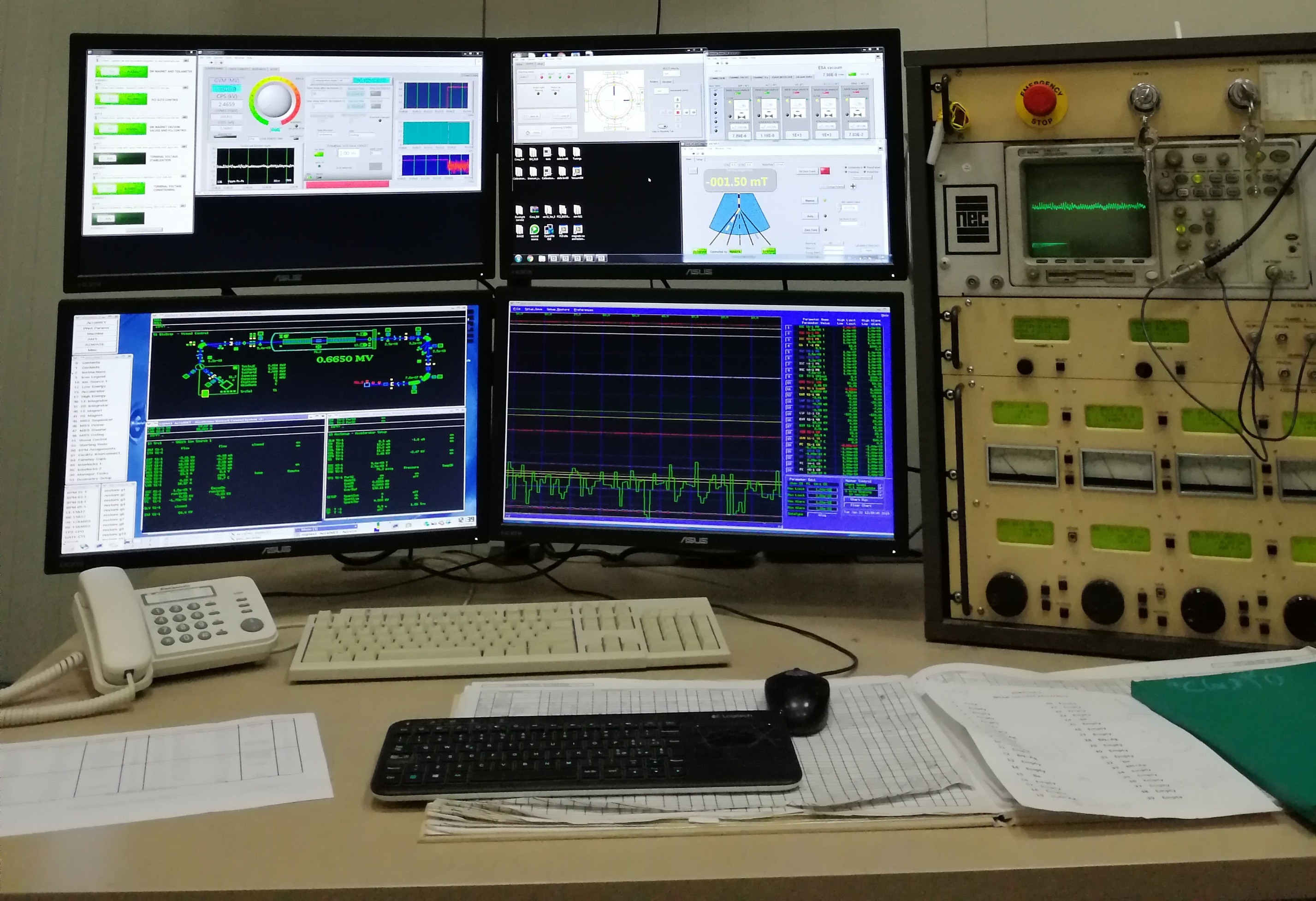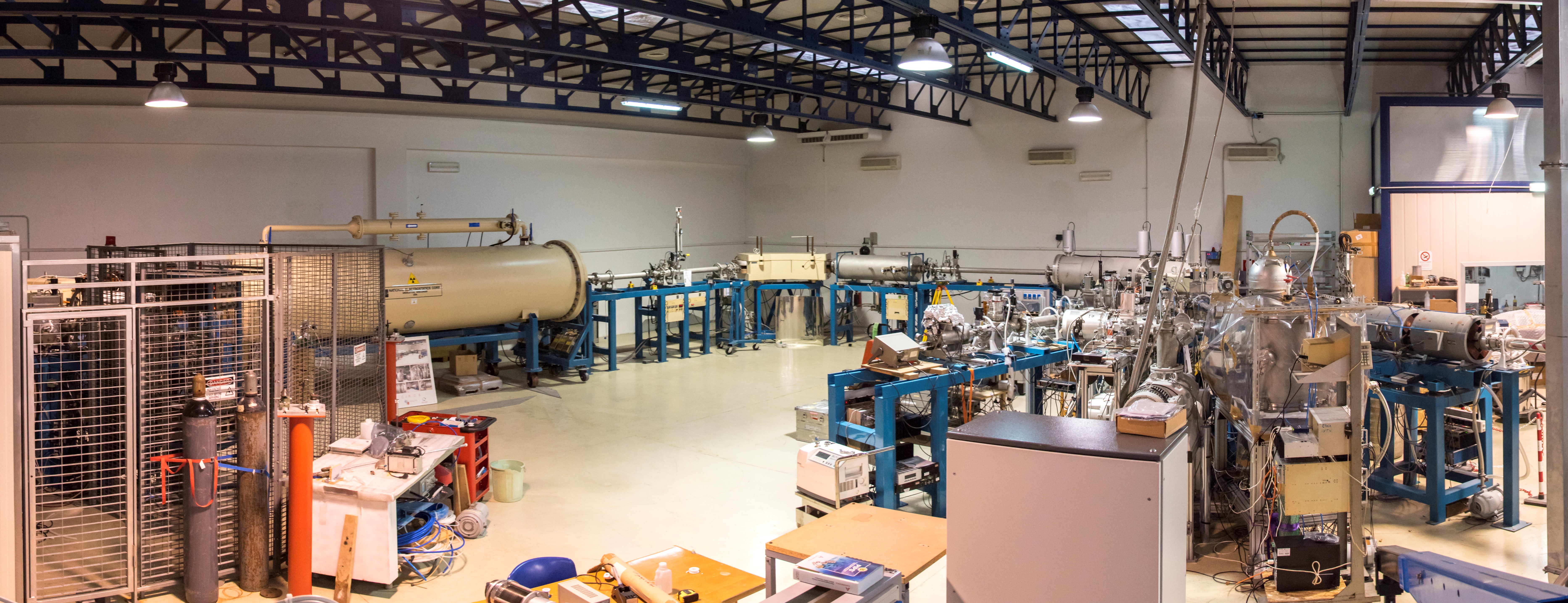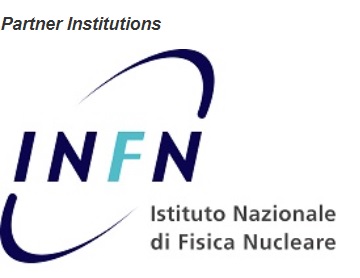|
The Tandem Accelerator Laboratory (TAL) was established in 2005 with the aim of performing basic and applied research, as well as service activity, using isotopic methodologies applied to the diagnostics of cultural heritage artifacts and to the study of environmental processes. As such methodologies were originally developed in the domain of physics research, the fields of activity of CIRCE were extended, on one side, towards basic nuclear physics and nuclear astrophysics and, on the other side, towards industrial applications. Mass spectrometry of isotopes of the most abundant elements in nature is a powerful investigation tool, widely used in sciences applied to the cultural and environmental heritage diagnostics. The environment is, by its nature, in continuous evolution, but mankind has accelerated the path towards an unknown direction. The measurement of the isotopic composition of elements such as Carbon, Oxygen and Nitrogen in the atmosphere, in soils, in vegetation and in waters has been demonstrated to be a very sensitive indicator of the tiny variations of the fluxes of such elements and to study mechanisms still barely understood. The presence in the environment of long lived cosmogenic isotopes allows to significantly extend the investigation possibilities, provided the isotopic ratio measurement sensitivity is pushed to extremely high levels, not accessible to conventional mass spectrometry. Accelerator Mass Spectrometry (AMS) is a sophisticated method which allows ultrasensitive measurements, the most widely known being radiocarbon dating. Dating of finds with age old up to 50 ky can be performed if they contain organic Carbon. In this case the 14C/12C isotopic ratio, constant and equal to the atmospheric CO2 value during the life of the organism, starts decreasing following an exponential law with a half-life of 5730 y. The measurement of the present isotopic ratio yields in this way the time elapsed since the death of the organism. The utilization of natural chronometers such as 14C expands over a large variety of scientific investigation fields from archaeology to climatology, from hydrology to oceanography, from paleontology to paleomagnetism, from environmental physics to volcanology .More in general, AMS allows ultrasensitive measurements of the concentration of rare isotopes, which represent an extremely sensitive indicator of natural processes which characterized in the past the terrestrial ecosystem as well as of human activity. CIRCE operates an AMS system based on a 3MV tandem accelerator, reaching a state-of-the-art precision and accuracy level. Coupled with an ultralow contamination sample treatment laboratory, this facility is the heart of a large number of advanced research programs and of a structure able to offer a high-quality routine service for archaeology, earth science, forensics, nuclear safeguards. At the same time the accelerator delivers intense beams inducing nuclear reactions on solid or gas targets in the framework of international research programs in basic and applied nuclear physics and nuclear astrophysics. In the latter domain the laboratory is equipped with state-of-the-art equipment including ERNA (European Recoil separator for Nuclear Astrophysics) for the study of nuclear reactions playing a key-role in nucleosynthesis and stellar evolution. ERNA is a mass separator designed and optimized for the study of proton and alpha capture reactions at low energy. ERNA is a unique equipment in Europe, with few competitors worldwide (Dragon-TRIUMF Canada, St. George ND, USA; DRS-ORNL, USA; Kyushu, Japan). ERNA can be used with supersonic jet and extended gas targets in combination with a NaI detector array. The Environmental Radioactivity Laboratory performs qualitative and quantitative analyses by high resolution and low-background γ-ray (as well as α and β) spectroscopy. A regional network has been established for monitoring Radon emissions from soils, in relationship with seismic and volcanic acivity and to characterize soils and building materials. Group members give lectures on topics related to our research fields and contribute also to general physics courses of the Department of Mathematics and Physics of the 2nd University of Naples. Each semester laboratory courses are offered to physics students, and several thesis (both degree and PhD) works use the Circe facilities. Guests from various research institutes in Italy and abroad collaborate to the research activity of CIRCE and give seminars and courses to our students. The presence in the environment of long lived cosmogenic isotopes allows to significantly extend the investigation possibilities, provided the isotopic ratio measurement sensitivity is pushed to extremely high levels, not accessible to conventional mass spectrometry. Accelerator Mass Spectrometry (AMS) is a sophisticated method which allows ultrasensitive measurements, the most widely known being radiocarbon dating. Dating of finds with age old up to 50 ky can be performed if they contain organic Carbon. In this case the 14C/12C isotopic ratio, constant and equal to the atmospheric CO2 value during the life of the organism, starts decreasing following an exponential law with a half-life of 5730 y. The measurement of the present isotopic ratio yields in this way the time elapsed since the death of the organism. The utilization of natural chronometers such as 14C expands over a large variety of scientific investigation fields from archaeology to climatology, from hydrology to oceanography, from paleontology to paleomagnetism, from environmental physics to volcanology .More in general, AMS allows ultrasensitive measurements of the concentration of rare isotopes, which represent an extremely sensitive indicator of natural processes which characterized in the past the terrestrial ecosystem as well as of human activity. CIRCE operates an AMS system based on a 3MV tandem accelerator, reaching a state-of-the-art precision and accuracy level. Coupled with an ultralow contamination sample treatment laboratory, this facility is the heart of a large number of advanced research programs and of a structure able to offer a high-quality routine service for archaeology, earth science, forensics, nuclear safeguards. At the same time the accelerator delivers intense beams inducing nuclear reactions on solid or gas targets in the framework of international research programs in basic and applied nuclear physics and nuclear astrophysics. In the latter domain the laboratory is equipped with state-of-the-art equipment including ERNA (European Recoil separator for Nuclear Astrophysics) for the study of nuclear reactions playing a key-role in nucleosynthesis and stellar evolution. ERNA is a mass separator designed and optimized for the study of proton and alpha capture reactions at low energy. ERNA is a unique equipment in Europe, with few competitors worldwide (Dragon-TRIUMF Canada, St. George ND, USA; DRS-ORNL, USA; Kyushu, Japan). ERNA can be used with supersonic jet and extended gas targets in combination with a NaI detector array. The Environmental Radioactivity Laboratory performs qualitative and quantitative analyses by high resolution and low-background γ-ray (as well as α and β) spectroscopy. A regional network has been established for monitoring Radon emissions from soils, in relationship with seismic and volcanic acivity and to characterize soils and building materials. Group members give lectures on topics related to our research fields and contribute also to general physics courses of the Department of Mathematics and Physics of the 2nd University of Naples. Each semester laboratory courses are offered to physics students, and several thesis (both degree and PhD) works use the Circe facilities. Guests from various research institutes in Italy and abroad collaborate to the research activity of CIRCE and give seminars and courses to our students.
|




 The presence in the environment of long lived cosmogenic isotopes allows to significantly extend the investigation possibilities, provided the isotopic ratio measurement sensitivity is pushed to extremely high levels, not accessible to conventional mass spectrometry. Accelerator Mass Spectrometry (AMS) is a sophisticated method which allows ultrasensitive measurements, the most widely known being radiocarbon dating. Dating of finds with age old up to 50 ky can be performed if they contain organic Carbon. In this case the 14C/12C isotopic ratio, constant and equal to the atmospheric CO2 value during the life of the organism, starts decreasing following an exponential law with a half-life of 5730 y. The measurement of the present isotopic ratio yields in this way the time elapsed since the death of the organism. The utilization of natural chronometers such as 14C expands over a large variety of scientific investigation fields from archaeology to climatology, from hydrology to oceanography, from paleontology to paleomagnetism, from environmental physics to volcanology .More in general, AMS allows ultrasensitive measurements of the concentration of rare isotopes, which represent an extremely sensitive indicator of natural processes which characterized in the past the terrestrial ecosystem as well as of human activity. CIRCE operates an AMS system based on a 3MV tandem accelerator, reaching a state-of-the-art precision and accuracy level. Coupled with an ultralow contamination sample treatment laboratory, this facility is the heart of a large number of advanced research programs and of a structure able to offer a high-quality routine service for archaeology, earth science, forensics, nuclear safeguards. At the same time the accelerator delivers intense beams inducing nuclear reactions on solid or gas targets in the framework of international research programs in basic and applied nuclear physics and nuclear astrophysics. In the latter domain the laboratory is equipped with state-of-the-art equipment including ERNA (European Recoil separator for Nuclear Astrophysics) for the study of nuclear reactions playing a key-role in nucleosynthesis and stellar evolution. ERNA is a mass separator designed and optimized for the study of proton and alpha capture reactions at low energy. ERNA is a unique equipment in Europe, with few competitors worldwide (Dragon-TRIUMF Canada, St. George ND, USA; DRS-ORNL, USA; Kyushu, Japan). ERNA can be used with supersonic jet and extended gas targets in combination with a NaI detector array. The Environmental Radioactivity Laboratory performs qualitative and quantitative analyses by high resolution and low-background γ-ray (as well as α and β) spectroscopy. A regional network has been established for monitoring Radon emissions from soils, in relationship with seismic and volcanic acivity and to characterize soils and building materials. Group members give lectures on topics related to our research fields and contribute also to general physics courses of the Department of Mathematics and Physics of the 2nd University of Naples. Each semester laboratory courses are offered to physics students, and several thesis (both degree and PhD) works use the Circe facilities. Guests from various research institutes in Italy and abroad collaborate to the research activity of CIRCE and give seminars and courses to our students.
The presence in the environment of long lived cosmogenic isotopes allows to significantly extend the investigation possibilities, provided the isotopic ratio measurement sensitivity is pushed to extremely high levels, not accessible to conventional mass spectrometry. Accelerator Mass Spectrometry (AMS) is a sophisticated method which allows ultrasensitive measurements, the most widely known being radiocarbon dating. Dating of finds with age old up to 50 ky can be performed if they contain organic Carbon. In this case the 14C/12C isotopic ratio, constant and equal to the atmospheric CO2 value during the life of the organism, starts decreasing following an exponential law with a half-life of 5730 y. The measurement of the present isotopic ratio yields in this way the time elapsed since the death of the organism. The utilization of natural chronometers such as 14C expands over a large variety of scientific investigation fields from archaeology to climatology, from hydrology to oceanography, from paleontology to paleomagnetism, from environmental physics to volcanology .More in general, AMS allows ultrasensitive measurements of the concentration of rare isotopes, which represent an extremely sensitive indicator of natural processes which characterized in the past the terrestrial ecosystem as well as of human activity. CIRCE operates an AMS system based on a 3MV tandem accelerator, reaching a state-of-the-art precision and accuracy level. Coupled with an ultralow contamination sample treatment laboratory, this facility is the heart of a large number of advanced research programs and of a structure able to offer a high-quality routine service for archaeology, earth science, forensics, nuclear safeguards. At the same time the accelerator delivers intense beams inducing nuclear reactions on solid or gas targets in the framework of international research programs in basic and applied nuclear physics and nuclear astrophysics. In the latter domain the laboratory is equipped with state-of-the-art equipment including ERNA (European Recoil separator for Nuclear Astrophysics) for the study of nuclear reactions playing a key-role in nucleosynthesis and stellar evolution. ERNA is a mass separator designed and optimized for the study of proton and alpha capture reactions at low energy. ERNA is a unique equipment in Europe, with few competitors worldwide (Dragon-TRIUMF Canada, St. George ND, USA; DRS-ORNL, USA; Kyushu, Japan). ERNA can be used with supersonic jet and extended gas targets in combination with a NaI detector array. The Environmental Radioactivity Laboratory performs qualitative and quantitative analyses by high resolution and low-background γ-ray (as well as α and β) spectroscopy. A regional network has been established for monitoring Radon emissions from soils, in relationship with seismic and volcanic acivity and to characterize soils and building materials. Group members give lectures on topics related to our research fields and contribute also to general physics courses of the Department of Mathematics and Physics of the 2nd University of Naples. Each semester laboratory courses are offered to physics students, and several thesis (both degree and PhD) works use the Circe facilities. Guests from various research institutes in Italy and abroad collaborate to the research activity of CIRCE and give seminars and courses to our students.